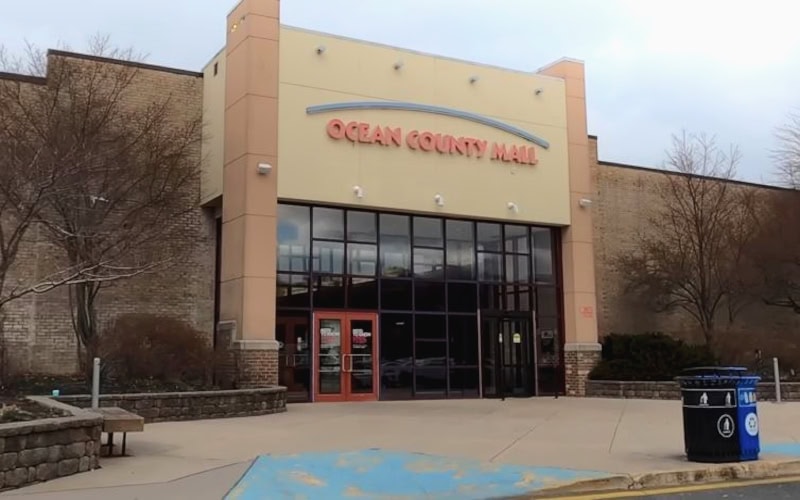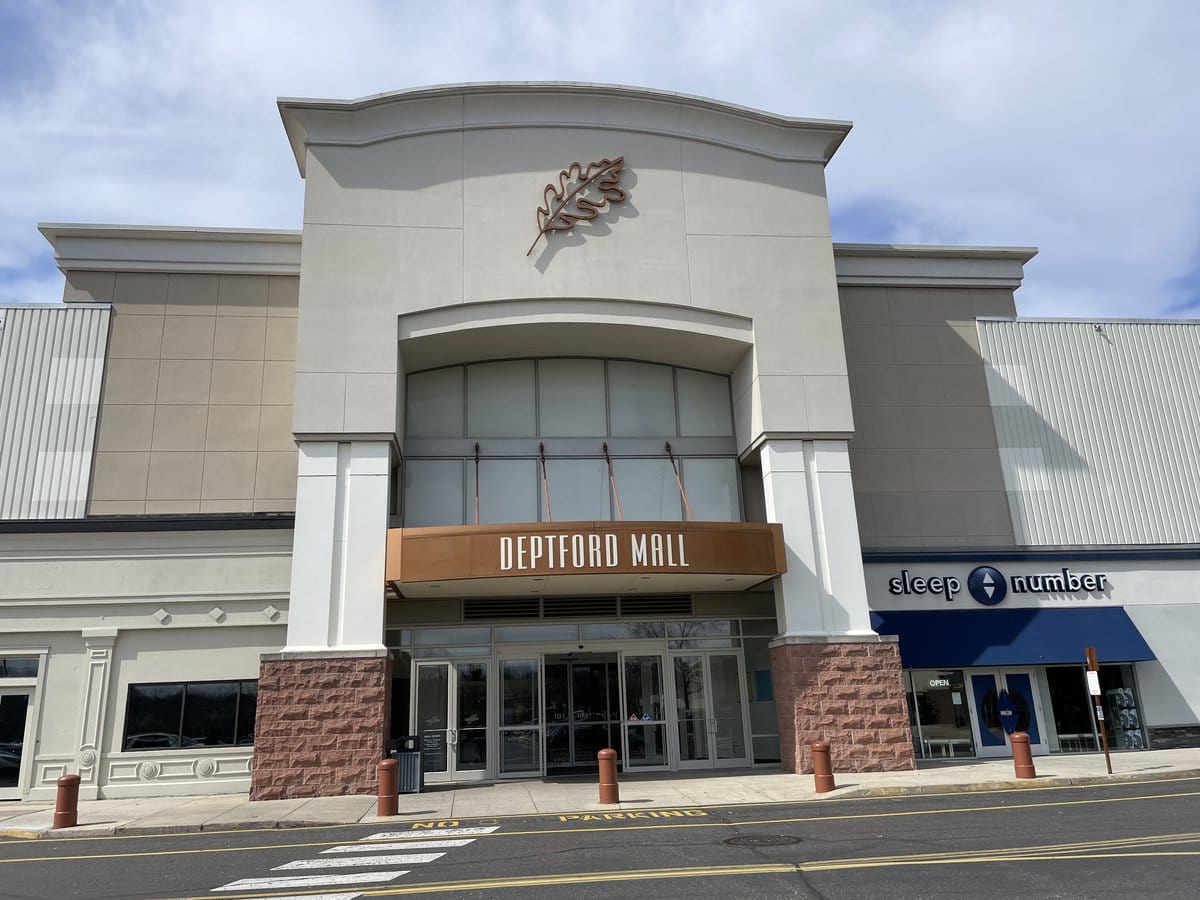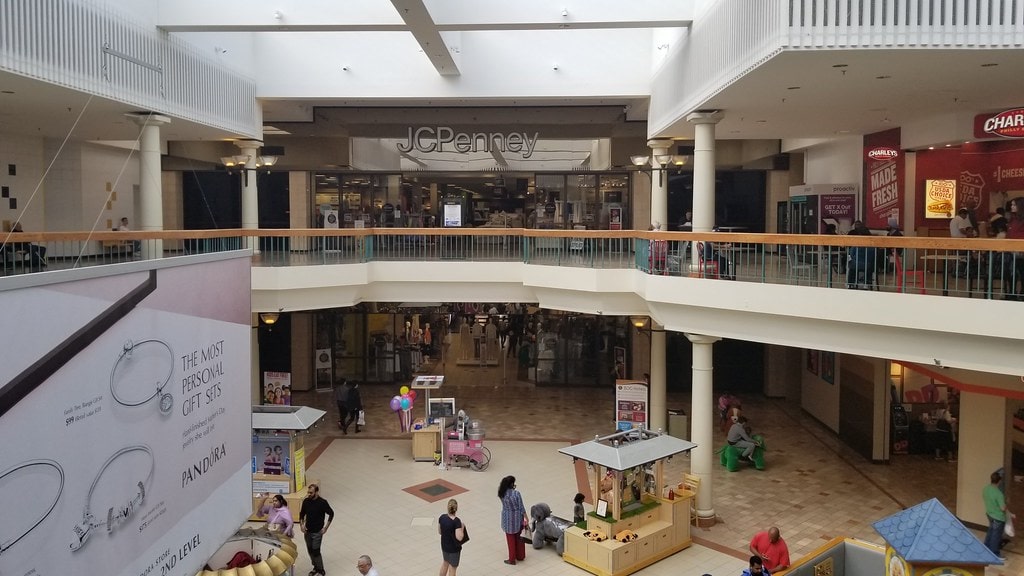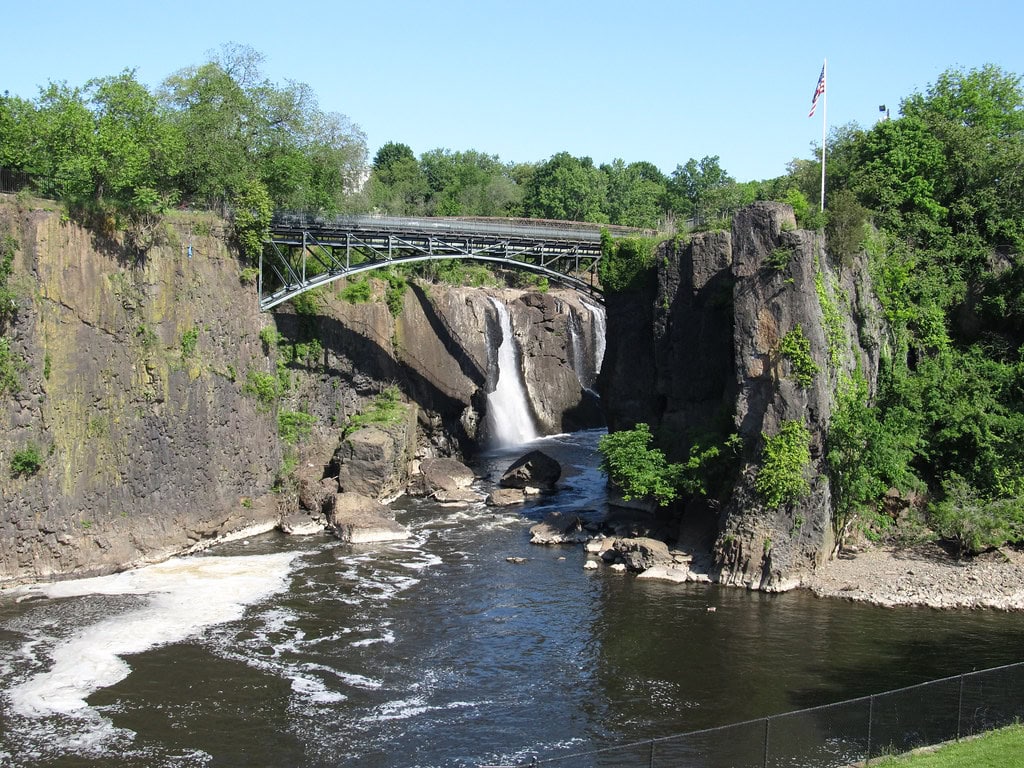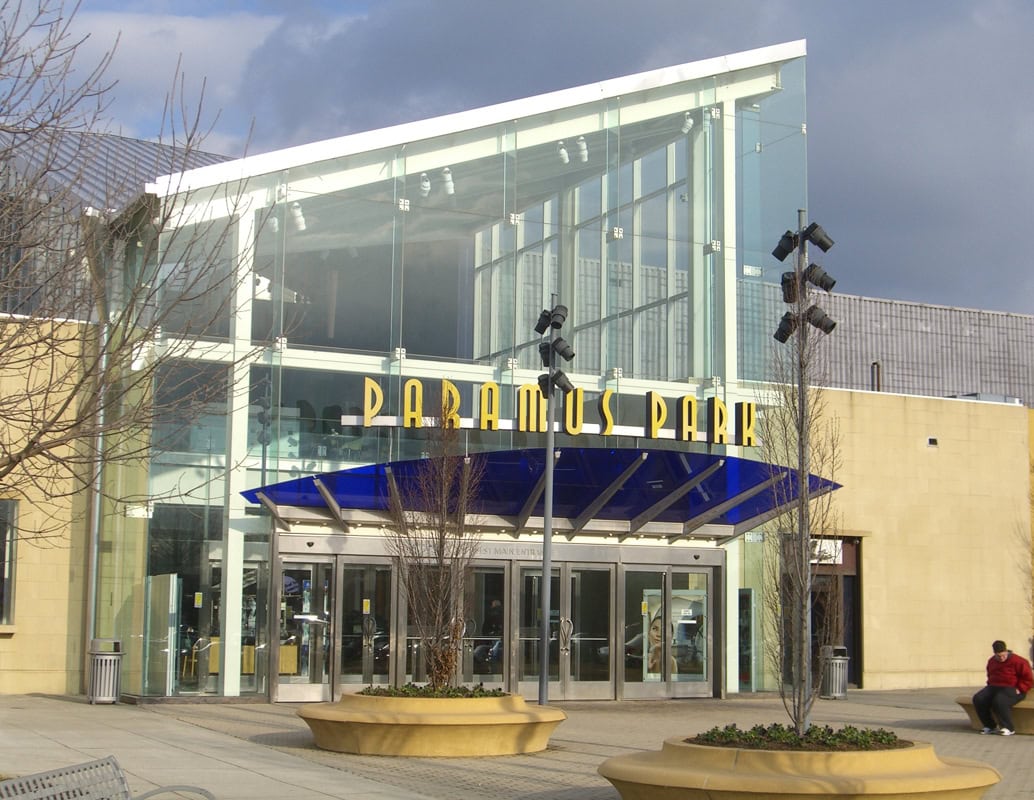Brewing Wealth in Brick and Wood
In 1888, a mansion began rising at 601 High Street in Newark, New Jersey.
Gottfried Krueger - whose name hung over saloons and beer wagons across the state - paid $250,000 to bring it to life.
He founded the Gottfried Krueger Brewing Company, one of the largest brewing operations in Newark at the time.
That kind of money didn't just buy square footage - it bought layers of craftsmanship, a five-story turret, and a commanding view from the corner lot.
Architect Henry Schultz gave it a Late Victorian form with a Queen Anne twist.
The asymmetrical façade broke from classical symmetry - intentional, even bold for the time.
A wraparound porch curved past arched entryways.
The roof pitched steeply, sending lines of shadow across the brick face, especially in the low afternoon sun.
Every side of the building offered something to look at.
Inside, the house had 40 rooms. The lath and plaster walls held wallpaper chosen to impress guests and outlast the weather.
Molded wood trim framed doorways. The floors - laid in repeating geometric patterns - were made of hardwood, not soft pine.
Even the windows had pediments, borrowed from the Italianate style, sitting over thick panes that reflected the street and sky.
The Krueger-Scott Mansion stood just blocks from the city's bustling brewery corridors. That wasn't a coincidence.
At the time, Newark's brewing scene was in full swing - Krueger's brand had already absorbed smaller breweries and expanded into new markets.
So, the house wasn't just personal. It was a public message shaped in lumber and stone.
Today, visitors looking for things to do in Newark, New Jersey, might drive past it without knowing who once lived there - or how the house was designed to prove that he'd made it.
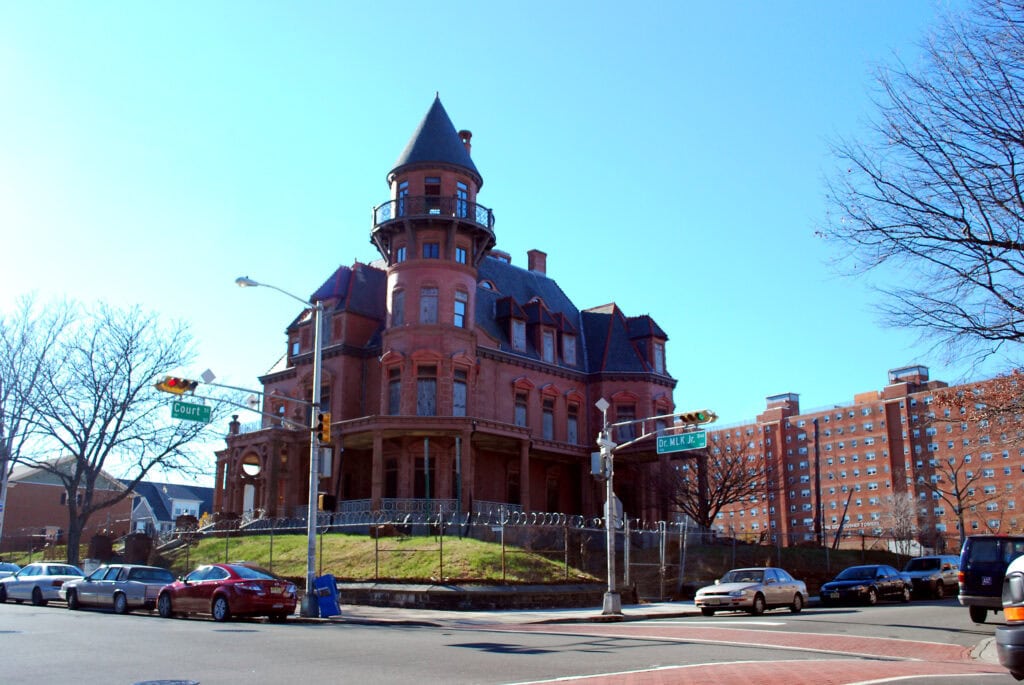
Sales, Transfers, and the Business of Owning Space
By 1926, the Krueger-Scott Mansion changed hands for the first time.
The buyer was the Valley of Newark Scottish Rite Freemasons, and the price was $100,000.
They didn't leave the house as-is. A 700-seat auditorium was added, tucked behind the original structure.
That move turned the old brewery magnate's house into a meeting hall - functional, formal, and tailored to ritual.
From the outside, little changed. But the interior began to shift.
Rooms once built for domestic life started serving group gatherings, ceremonies, and lectures.
Ownership came with its version of remodeling. Some of the ornate features stayed, like the patterned hardwood flooring.
Others - walls and doorways - were moved or opened to allow for traffic flow and larger crowds.
Then, in 1958, the Krueger-Scott Mansion entered a new chapter.
Louise Scott bought the house for $85,000. She wasn't buying nostalgia.
She saw potential in this big, visible property close to downtown.
Scott turned the ground floor into a beauty school while living on the upper levels.
It was a working building again, this time rooted in Black enterprise.
Her approach was practical. Classrooms took over former parlors.
Students moved through rooms where Freemasons had once met, and Krueger's guests had once stood with glasses in hand.
The shift from private home to public-use space was gradual but steady.
Each sale reflected new demands - new visions for what the property could hold.
The Krueger-Scott Mansion no longer served a single purpose.
It served whoever was willing to invest in it.
In 1972, the house was officially added to both the National Register of Historic Places and the New Jersey Register of Historic Places.
That recognition preserved the structure but didn't settle what came next.
Ownership still meant maintenance, and upkeep required more than a plaque.
Frozen Plans and Half-Finished Renovations
Louise Scott passed away in 1982, and the city of Newark then took ownership of the Krueger-Scott Mansion.
It wasn't a private sale - more of a handoff.
The property shifted from individual to municipal hands, and with that came a new kind of responsibility.
By 1991, it needed repairs. The New Jersey Historic Trust stepped in with $625,000 in stabilization funds, which Newark matched.
Crews focused on the exterior first. They worked to prevent further water damage, secured loose framing, and repaired sections of the roof.
At that point, the city had invested over $4 million into the property, aiming to transform the Krueger-Scott Mansion into a cultural center that would spotlight the contributions of Newark's Black residents.
That goal had backing. Federal funds added another $1.5 million.
However, between the funding and the vision, the timeline stretched. The house remained in limbo.
Interior restoration didn't match the pace of the grants.
Projects slowed, paused, and eventually stopped altogether.
Newark's Municipal Council refused to allocate more money, and the house was left unfinished.
The cultural center never opened, and programming never launched, but the building didn't fall apart.
The structure held though it sat dormant for years.
Ownership never fully changed during that time, but purpose kept slipping through the cracks.
The story was stuck. The Krueger-Scott Mansion wasn't a museum, a business, or a home.
It was just there - waiting, fenced off, its future stalled on paper.
Development Deals and Maker-Driven Rebranding
In late 2020, Newark struck a deal.
After years of stalled plans, the city partnered with Makerhoods, an organization focused on blending real estate development with support for small-scale entrepreneurs.
Their pitch was direct: turn the Krueger-Scott Mansion into something usable - not a museum or a monument, but a space where people could live, work, and build businesses.
The plan wasn't small.
The Krueger-Scott Mansion would anchor a larger site that included 66 mixed-income apartments, 16 rentable maker spaces, two commercial kitchens, and a greenhouse.
It revolved around the idea of supporting "makers" - local professionals in the beauty, food, design, and craft industries.
Each tenant would apply for a spot, and the rent would be $1,800 per month.
Construction started with the mansion itself. Crews restored the porch, refinished the original woodwork, and rewired the interior.
Where wallpaper had peeled, new finishes were installed.
Original hardwood floors - some damaged during earlier work - were patched or replaced to match the old grain.
The wraparound porch, which had sagged for years, stood straight again by mid-2022.
The rest of the Makerhoods complex grew around the Krueger-Scott Mansion but didn't swallow it.
That was part of the appeal. Tenants could walk past century-old architecture on their way to modern workshops.
Events and open houses began to pull foot traffic into the area again.
By 2023, the Krueger-Scott Mansion had reentered Newark's business ecosystem - this time as a hybrid space.
A historic building was now a feature in a new kind of commercial offer.
It wasn't preserved behind velvet ropes.
It was listed on applications, highlighted in sales pitches, and featured in development briefings.
The house also became popular. The animated series The Venture Bros. featured a lookalike version of the Fitzcarraldo Mansion.
Its five-story turret and arched windows were hard to miss, even in cartoon form.
The reference was visual but clear.
The house is active, open, and photographed more than it has in decades.
Its image appears on fliers, websites, and business cards.
At street level, it looks different, too - less like a relic and more like a corner office with carved wood trim and curved glass windows.
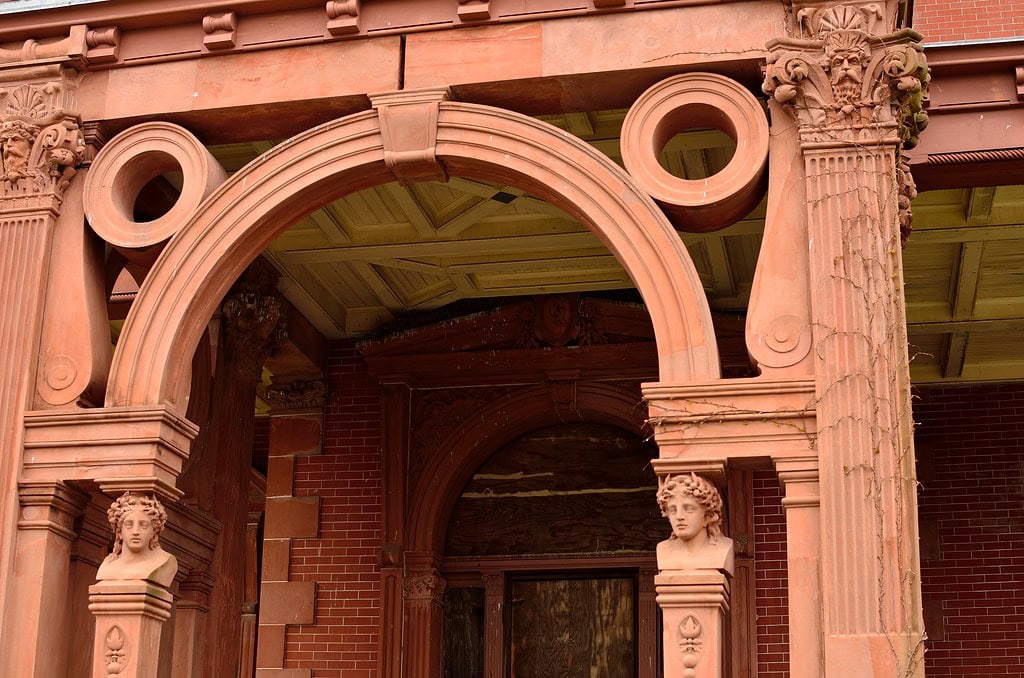
A Courtyard in Motion, 2025
On a cold morning in February 2025, people gathered again at the Krueger-Scott Mansion.
Makerhoods Newark had announced the event through its channels - another opportunity for makers, neighbors, and small business owners to come together on the property's grounds.
The courtyard had already seen activity throughout the year.
Back in June 2024, Bike Newark brought its route maps and signage to the space, using the mansion as a backdrop for a day focused on cycling in the city.
Later that same month, on June 28, guests arrived dressed for the Amethyst & Amber Griot Gala, an event curated by Evoluculture.
Local poets and storytellers took center stage beneath the restored exterior.
By October 20, another round of programming had brought people into the courtyard.
Photos from the day showed pop-up setups, small clusters of guests, and Makerhoods' branding hanging from the table fronts.
The event was aimed at building community, connecting aspiring tenants, established makers, and curious residents.
The Krueger-Scott Mansion stayed central throughout.
It wasn't just a setting; it helped shape the feel of each gathering.
Stonework, porch columns, and tall windows stood behind the people in every frame - silent but constant.
Event posts came regularly, each one setting the mansion in motion: a new program, a new table, another crowd arriving with coats and flyers.

